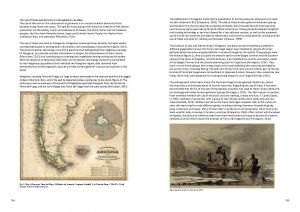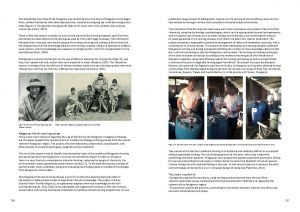Patagonian fish skin tanning processes
Trachter, F., Palomino, E., Defeo, G. (2021) Patagonian fish skin tanning processes. XXXVI IULTCS Congress Greening the Leather Value Chain
The ancient tradition of using fish skin to create clothing and accessories is shared by several
coastal Arctic societies as part of their subsistence lifestyle depending on aquatic resources for
nourishment and clothing.
Antarctica has no population, but the Tehuelches, Selk’nam, Yámanas and Alakaluf are some of the
world’s southernmost Indigenous Peoples closest to Antarctica. They live in the Patagonian region
of southern Argentina, Chile, including Tierra del Fuego islands. They fish and hunt animals
whose migrations in the Antarctic are a critical component of their survival.
There is not much literature regarding the use of fish skin by the Patagonian Indigenous Peoples,
but they were known for the use of sea cow hides to make clothes and blankets to keep them
warm and protected against the elements. The Tehuelche women spread them with chewed liver
and then tan them by hand, rubbing them vigorously.
This paper evaluates the traditional fish skin tanning process used by agronomist Gabriel Fabian
Trachter, this is a project promoted by the Secretary of Fisheries of the Province of Chubut in
Patagonia, using a process easily adaptable to any location. The tanning was done with Mimosa
extract and without any machines, allowing the development of fish skin tanning in areas with
electricity deficit. The method does not intend to discard the use of drums, vats or drying tanks,
but to show that it is also possible to tan without them. The results were tested at Ars Tinctoria
laboratory to identify the potential of this traditional tanning process with a very low
environmental impact.
https://iultcs.org/wp-content/uploads/2022/06/XXXVI-IULTCS-Congress-Book-of-Abstracts.pdf
- Fish skin Peoples of the Bering Strait
- Indigenous Arctic Fish Skin Heritage
- The Arctic as viewed from Florence
- Fish Skin Coat from the Amur River
- Patagonian fish skin tanning processes
- Alutiiq Fish Skin Traditions
- A virtual Alutiiq Fish Skin workshop
- A virtual Ainu fish skin workshop
- Fish skin, a historical material
- Preservation of Hezhen Fish Leather tradition
- Fashion workshop in Anchorage
- Indigenous Fish Skin Craft Revived
- Fish skin, a new environmental-friendly material
- Indigenous Arctic Fish skin and Fashion HE
- SDG 14 Life Below Water: Fish Skin







